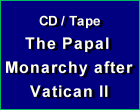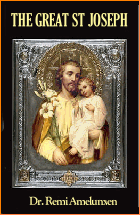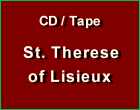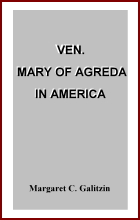Catholic Customs
 |
 |
 |
 |
 |
 |
 |
The Angelus: a Meditation on Christmas
The prayer of the Angelus is a meditation on Christmas, made through three essential points, with great brevity. It is eminently logical and well constructed.
But, as with all things in the Church, above that logical and coherent structure shines a universe of imponderables of unction and sacrality that constitutes a true beauty and forms an integral whole with this logical and rational structure.
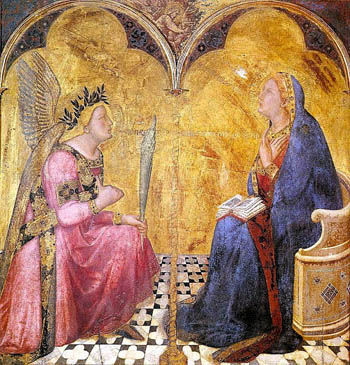 Let us look at the Christmas structure in the Angelus:
Let us look at the Christmas structure in the Angelus:
1st point: The Angel of the Lord declared unto Mary, and she conceived of the Holy Ghost;
2nd point: Behold the handmaid of the Lord; be it done to me according to His will;
3rd point: And the Word became Flesh, and dwelt among us.
Here are three aspects of Christmas. The first glorifies the Angel's message. The second presents Our Lady's full obedience to that message. The third glorifies the fact that the Word not only became incarnate, but also lived among us.
In these three points, the whole Christmas story is condensed in a form so synthetic, brief, logical and dense that nothing needs to be added.
Each point is followed by the recitation of a Hail Mary, which glorifies Our Lady and honors her for each aspect of that truth announced by the Angel.
This is the greatest event in human History, and the greatest honor for mankind is the Word Who became flesh and dwelt among us.
Thus, it became a pious custom of Catholics to recite the Angelus at dawn, at noon and, then, at dusk. In the three main stages of the day, the faithful repeat these truths and praise Our Lady for these truths and give thanks to her for these truths.
How beautiful it is to pray the Angelus at morning, noon and the end of the work day at 6 pm! One has the impression of a stained glass window that gradually changes its color, thus also does the Angelus change its hues. The atmosphere of the Angelus recited at noon when the work pace is intense is different from the Angelus recited at twilight when everything is vested with a suavity, a kind of beginning of a deep recollection.
The Church created this gem – the Angelus – and promotes its recitation at various times of the day to draw from this prayer all its beauty. In it a world of harmonies is found.
In the Angelus there is the admirable harmony between the highest clemency, simplicity, profundity of concepts and an indefinable beauty that has poetic and literary aspects that do not conflict with the Faith, but rather complement it.
Imagine if the Angelus had been commissioned by a Minister or President of the Republic: Decree n. 10,000 or so: “Compose a prayer to be recited in the morning, noon and afternoon every day, every year, for all the centuries.” We would have one thunderbolt little prayer, senseless, empty and dry. Anything could result, but not the Angelus.
Since the present day man lacks that fullness of mind where things are ordered with all naturality along the lines of logic, consistency and beauty, we do not even perceive what is behind something so well thought out, so full of meaning, so well constructed, so well prayed, and, above all, so well believed.
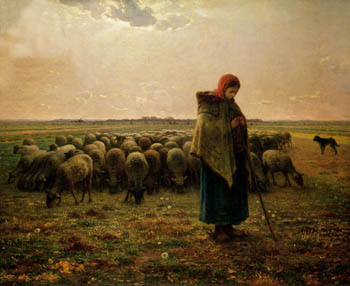 Let us, then, look for the spirit of the Catholic Church in all things in life: the good times of the Church, the traditions of the Church. When subjecting such things to a rational analysis, we find suns shining inside them, one beauty after another, which is proper to the inexhaustible richness of the Catholic spirit. Thus, any simple thing that is Catholic reveals a true marvel.
Let us, then, look for the spirit of the Catholic Church in all things in life: the good times of the Church, the traditions of the Church. When subjecting such things to a rational analysis, we find suns shining inside them, one beauty after another, which is proper to the inexhaustible richness of the Catholic spirit. Thus, any simple thing that is Catholic reveals a true marvel.
The Angelus prayed by the peasant, the priest, the crusader, the warrior of the Spanish Reconquista, the Trappist monk: Each gives one of the thousand colors in the stained glass window. It is so simple, so easy, so natural that, for this reason, it reveals a real jewel.
This should lead us to be more and more faithful to praying the Angelus, never omitting it on any occasion, remembering it in our morning prayer, remembering all that is contained in it.


The story of the Incarnation is revealed in the Angelus
1st point: The Angel of the Lord declared unto Mary, and she conceived of the Holy Ghost;
2nd point: Behold the handmaid of the Lord; be it done to me according to His will;
3rd point: And the Word became Flesh, and dwelt among us.
Here are three aspects of Christmas. The first glorifies the Angel's message. The second presents Our Lady's full obedience to that message. The third glorifies the fact that the Word not only became incarnate, but also lived among us.
In these three points, the whole Christmas story is condensed in a form so synthetic, brief, logical and dense that nothing needs to be added.
Each point is followed by the recitation of a Hail Mary, which glorifies Our Lady and honors her for each aspect of that truth announced by the Angel.
This is the greatest event in human History, and the greatest honor for mankind is the Word Who became flesh and dwelt among us.
Thus, it became a pious custom of Catholics to recite the Angelus at dawn, at noon and, then, at dusk. In the three main stages of the day, the faithful repeat these truths and praise Our Lady for these truths and give thanks to her for these truths.
How beautiful it is to pray the Angelus at morning, noon and the end of the work day at 6 pm! One has the impression of a stained glass window that gradually changes its color, thus also does the Angelus change its hues. The atmosphere of the Angelus recited at noon when the work pace is intense is different from the Angelus recited at twilight when everything is vested with a suavity, a kind of beginning of a deep recollection.
The Church created this gem – the Angelus – and promotes its recitation at various times of the day to draw from this prayer all its beauty. In it a world of harmonies is found.
In the Angelus there is the admirable harmony between the highest clemency, simplicity, profundity of concepts and an indefinable beauty that has poetic and literary aspects that do not conflict with the Faith, but rather complement it.
Imagine if the Angelus had been commissioned by a Minister or President of the Republic: Decree n. 10,000 or so: “Compose a prayer to be recited in the morning, noon and afternoon every day, every year, for all the centuries.” We would have one thunderbolt little prayer, senseless, empty and dry. Anything could result, but not the Angelus.
Since the present day man lacks that fullness of mind where things are ordered with all naturality along the lines of logic, consistency and beauty, we do not even perceive what is behind something so well thought out, so full of meaning, so well constructed, so well prayed, and, above all, so well believed.

A sheperdess pauses at dusk to pray the Angelus
The Angelus prayed by the peasant, the priest, the crusader, the warrior of the Spanish Reconquista, the Trappist monk: Each gives one of the thousand colors in the stained glass window. It is so simple, so easy, so natural that, for this reason, it reveals a real jewel.
This should lead us to be more and more faithful to praying the Angelus, never omitting it on any occasion, remembering it in our morning prayer, remembering all that is contained in it.

Posted December 9, 2015
______________________
______________________



